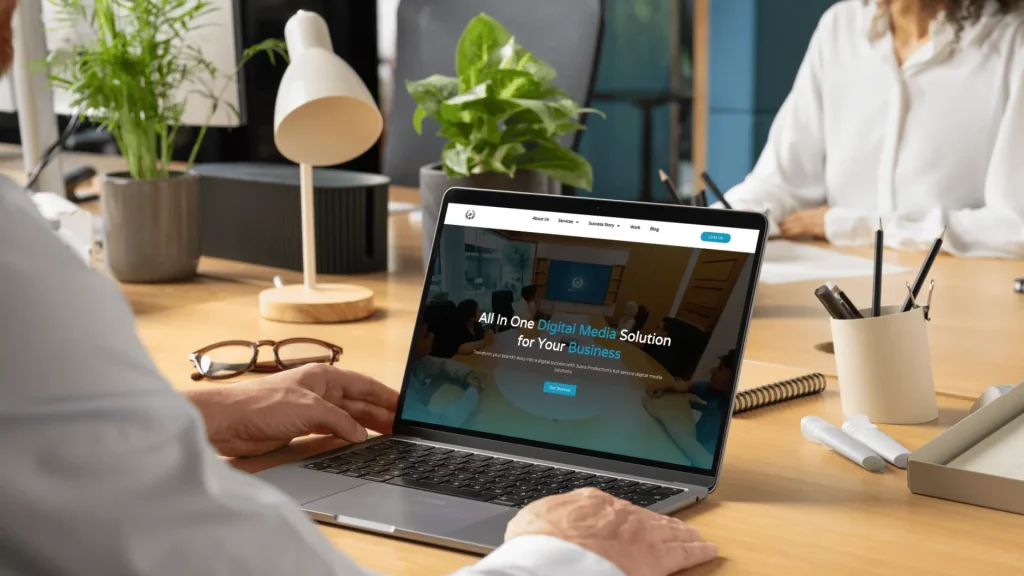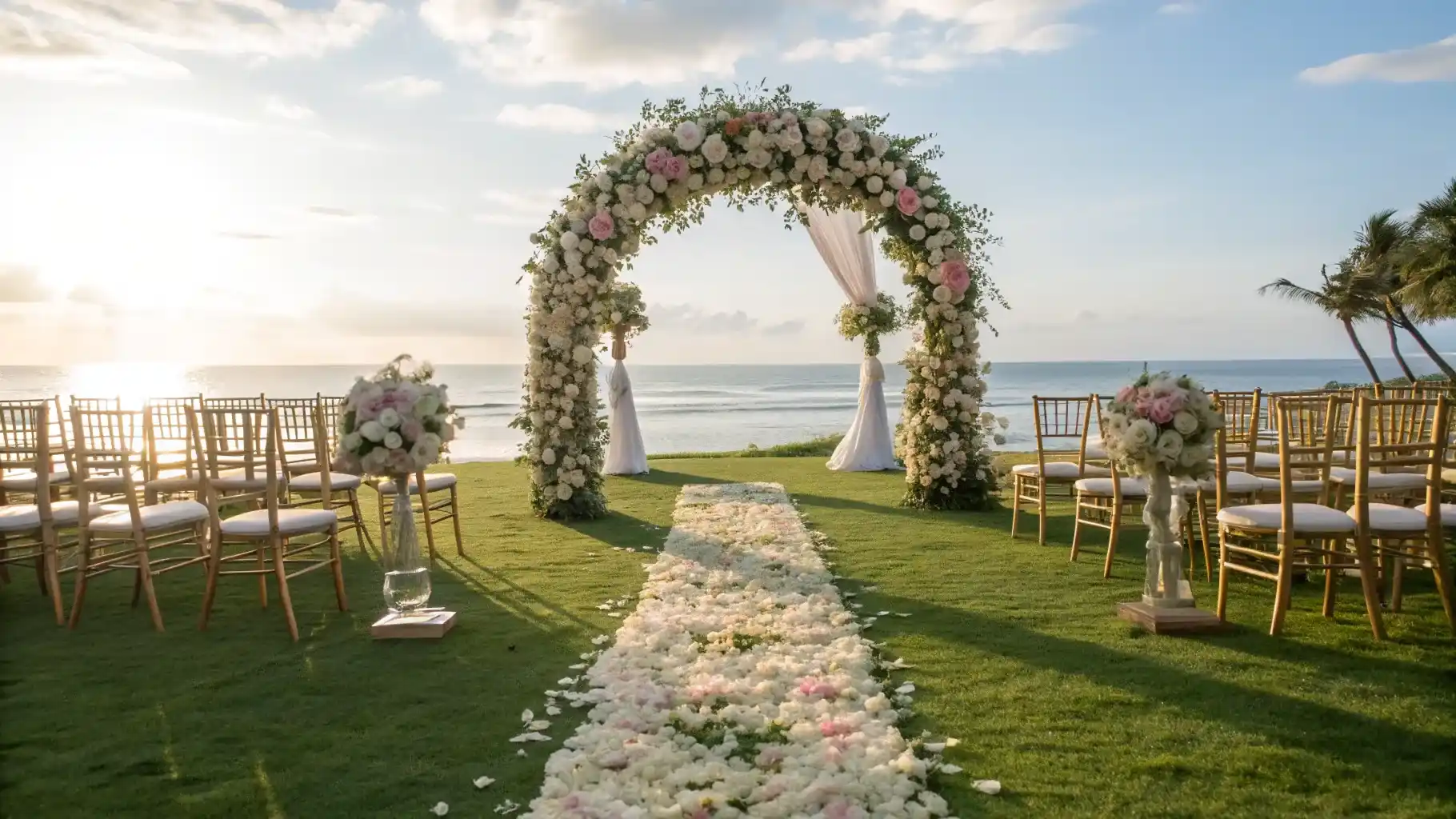What is the Difference Between Website Developer and Website Designer?
Oktarina
July 17, 2025
10 min read

In today’s digital world, having a strong online presence is essential for businesses, entrepreneurs, and personal brands. A well-built website can be a powerful marketing tool, providing a platform for showcasing products, services, or individual work. However, creating a successful website involves more than aesthetics—it requires both website development and design. This often leads to the question, What is the difference between a website developer and a website designer? While the terms may sound similar, they refer to two distinct roles in the website creation. A website developer focuses on the site’s technical and functional aspects, while website design is more concerned with the visual layout and user experience.
Understanding the difference between website developer and designer roles is crucial for businesses and individuals who want to make informed decisions when selecting the right professionals for their website needs. In this article, we will explore these differences, explore how they complement each other, and provide guidance on how to choose the right expert for your project.
What is a Website Developer?

Website development is the process of building and maintaining a website to ensure it works well, looks good, and functions smoothly. It involves both backend and frontend development. Backend development focuses on the server-side, which includes databases, servers, and APIs that power the website. Frontend development, however, deals with what users see and interact with, ensuring the design is user-friendly and works well on all devices.
A website developer is responsible for creating the structure and functionality of the site using coding languages like HTML, CSS, JavaScript, PHP, and Python. They build features like online stores, booking systems, or content management systems (CMS). Developers also work to optimize website performance, ensuring the site loads quickly, is mobile-friendly, and is secure. For example, they may add SSL certificates to protect users’ data.
To help with this process, developers use tools like Git for version control, Visual Studio Code for writing code, and server management tools like Apache or Nginx. Popular frameworks such as WordPress, React, Laravel, and Django are often used to make development faster and more efficient.
For instance, a developer might build an e-commerce site with product filters, a shopping cart, payment systems, and a responsive design for mobile users. The goal is to create a functional, secure, and well-optimized website that meets business and user needs.
What is a Website Designer?

A website designer focuses on the visual elements of a website, including its layout, color scheme, typography, and overall user experience (UX). A designer’s primary goal is to create an engaging and intuitive design that reflects the brand’s identity while providing users a seamless, enjoyable experience. A well-designed website keeps visitors interested and encourages them to stay longer.
Designers are responsible for creating wireframes, mockups, and prototypes that map out the visual structure of the website before it’s developed. They ensure the design is user-friendly, with easy navigation and accessibility across all devices. Designers collaborate with developers to ensure the design is technically feasible and can be implemented smoothly.
Website designers use tools like Figma, Adobe XD, Sketch, and Canva to create their designs. Their skills include graphic design, UX/UI principles, branding, and color theory, which help them build visually appealing, functional websites.
For instance, a designer might design a photographer’s portfolio website, focusing on a modern aesthetic, intuitive layout, and responsive design that looks great on both desktop and mobile. The result is a website that looks beautiful and provides a smooth, user-friendly experience.
What is the Difference Between a Website Developer and a Website Designer?
When it comes to building a website, there are two crucial roles that work together to create a successful online presence: website developers and website designers. While both are essential to the website creation process, they focus on different aspects of the project. This section will explore the core differences between website development and website design, including their scope, skill sets, and deliverables. This will help clarify how these professionals collaborate to bring your vision to life.
1. Focus:
- Website Developer: A website developer focuses on the technical aspects of building and maintaining a website. This includes writing the code to ensure the website functions properly, optimizing its performance, and ensuring all backend components (databases, servers, and APIs) work together seamlessly. Developers also handle the website’s structure, ensuring it can handle complex tasks like e-commerce systems, booking platforms, or content management.
- Website Designer: A website designer focuses on the visual side of the website. They work on the layout, color schemes, typography, and overall user interface (UI). They aim to create an engaging and visually appealing site that enhances the user experience (UX). Designers ensure the website is intuitive, easy to navigate, and aligns with the brand’s identity. They create a pleasant user environment, making the visual elements functional and accessible across all devices.
2. Skills:
- Website Developer: Developers are skilled in coding languages like HTML, CSS, JavaScript, and backend languages like PHP and Python. They must also understand how to use frameworks like React, Laravel, or Django to build interactive and responsive websites. Additionally, developers have experience handling database management and ensuring security protocols like SSL certificates to protect users’ data.
- Website Designer: Designers excel in graphic design and understand UX/UI principles, crucial for creating functional and visually appealing websites. They are skilled in branding, color theory, and ensuring a website is accessible to all users. Their design skills include creating intuitive navigation, choosing color schemes that match the brand’s personality, and ensuring the layout is easy to understand.
3. Deliverables:
- Website Developer: The developer’s primary deliverable is a fully functional website. This includes ensuring that all backend features (such as payment systems, content management, and databases) work properly and making the website responsive and secure. Developers handle the technical side of things, ensuring the site runs smoothly across different devices and browsers.
- Website Designer: Designers’ main deliverables are visual mockups, wireframes, and prototypes. These tools help visualize the structure and design of the website before any code is written. They create the look and feel of the website, including layout, user interface, and overall design flow, to ensure the result is functional and visually appealing.
4. Tools:
- Website Developer: Developers use tools like Visual Studio Code for coding, Git for version control to keep track of changes in the code, and platforms such as WordPress or frameworks like Laravel and React to streamline the development process. These tools help developers manage the complex aspects of coding and deployment, ensuring the website works effectively across all devices.
- Website Designer: Designers use tools like Figma, Adobe XD, Sketch, and Canva to create design assets, including wireframes, mockups, and prototypes. These tools allow them to visualize the user interface, experiment with layouts, and collaborate with developers to ensure the design can be implemented effectively. Designers also use these tools to fine-tune visual elements and adjust the design to fit different screen sizes.
Read more: What to Know Before Developing a Website For Business? Check Here!
How Website Development and Website Designer Work Together

Creating a successful website requires collaboration between website developers and website designers. While these roles have distinct functions, working together ensures the website is visually appealing and fully functional. Their combined efforts are key to delivering a seamless, high-performance website.
- Synergistic Process:
The process begins with the website designer, who creates wireframes and mockups that outline the layout, color schemes, and user experience (UX) design. These designs give the website a clear visual direction. Once finalized, the designer hands the mockups to the website developer, who transforms them into functional code using languages like HTML, CSS, and JavaScript.
The developer ensures the design is responsive, meaning it will work well across various devices, from desktops to smartphones. They focus on the technical side, optimizing performance, security, and functionality. At the same time, the designer may continue refining the visuals to ensure the site remains aesthetically engaging while being user-friendly. - Real-World Example:
Consider a restaurant website. The designer creates an attractive menu layout with images and a user-friendly reservation interface. The developer integrates an online booking system and ensures the website is mobile-responsive. The developer also ensures the site is fast, secure, and functions well across all devices. - Importance of Collaboration:
A website’s success depends on both great visuals and robust functionality. While designers focus on making the site visually appealing, developers ensure the site works smoothly. Effective collaboration provides a seamless user experience that is both beautiful and functional, making the website more engaging and valuable for users.
Tips for Choosing the Right Website Development or Designer Professional
Choosing the right professional for your website project is crucial for creating a successful and effective website. Whether you need a website developer or designer, selecting the right expert is essential. Here are key tips to help guide your decision.
- Define Your Project Goals:
First, define your website’s goals. A website developer is your best choice if you require complex functionality, like an e-commerce platform or custom features. Developers focus on technical aspects, ensuring all features work smoothly. Consider hiring a website designer if you need a visually appealing, user-friendly website that focuses on design and experience. Designers specialize in creating an attractive layout and seamless user experience. - Review Portfolios and Expertise:
Always review the portfolio of the professional you’re considering. Designers often showcase their work on Behance or Dribbble, while developers display their code on GitHub. Look for client reviews on platforms like Upwork or Fiverr to assess their reliability, skill level, and overall experience. - Consider Full-Stack or Agency Solutions:
For a more efficient process, consider full-stack developers or agencies like Juara Production, which offer both development and design services. This ensures better collaboration and smoother workflows, saving time and reducing miscommunication. - Budget and Timeline:
Compare quotes from different professionals to ensure the costs align with your budget. Development costs are higher for advanced features, while design costs depend on complexity. Set clear expectations about timelines to avoid delays and ensure timely completion. - Communication and Feedback:
Choose professionals who are responsive and open to revisions. Effective communication ensures that your vision is accurately brought to life.
Read more: What Is a Digital Marketing Agency? A Complete Guide for Businesses in the Digital Era
Plan Your Website Project with Juara Production!
When it comes to website creation, achieving the perfect balance between website development and website design is key to building a functional and visually appealing website. Whether you’re looking for a highly interactive e-commerce platform or a beautifully designed portfolio to showcase your work, understanding the roles of both professionals ensures you make the right choice for your project.
If you need help with your website, Juara Production offers a comprehensive solution. With our Digital Agency Service, we have experienced developers and creative designers working together. We dedicated to delivering custom-built websites that meet your unique business or personal requirements. Whether developing a responsive site that works flawlessly across all devices, designing an intuitive user interface, or creating a brand identity that resonates with your target audience, we ensure that every aspect of your website is perfectly crafted.
If you’re ready to build the website of your dreams, Juara Production is here to help. Contact us today for a free consultation and kickstart your website project now!





